Do you want to reach more potential clients and strengthen client relationships? B2B content syndication is the perfect solution! Content syndication is an invaluable marketing tool for businesses that want to expand their reach. By syndicating content, you can extend your reach to a much wider audience. By distributing any type of high-quality, relevant content, such as:
• whitepapers
• e-books
• webinars
• blog posts
to a network of third-party websites like Linkedin, Facebook and YouTube, you can ensure that your message gets seen by more people. This way, you can continue to spread your message and reach a wider audience. Studies show that nearly 90% of B2B buyers prefer to review B2B content formats before getting in touch with a vendor, making content syndication a valuable asset for marketers in today's digital landscape. As we look ahead to 2023, content syndication will continue to be an essential tool for generating leads and reaching potential clients.
Definition of B2B Content Syndication
B2B Content syndication is the process of republishing content from one website to another. This could include anything from blog posts to infographics - no matter the type of content, it's all fair game for syndication. If you're looking for a way to share your content and reach a larger audience, content syndication is a great option! Content syndication is an exchange of goodwill, where a content creator provides their production to a third party in exchange for backlinks and increased exposure. This is a great way for creators to gain more visibility and reach a larger audience.
Backlinks help search engines rank your content higher in the search engine results pages (SERPs). Having a large number of high-quality backlinks from reputable websites sends positive signals to search engines that your website is a reliable source of information. This can help you get more organic traffic and improve your website’s overall ranking and visibility. Google's algorithms take into account the number of backlinks your website has when ranking websites, and B2B content syndication is a great way to build up those backlinks.

Additionally, B2B content syndication can help boost brand recognition and visibility by getting your content in front of a larger audience. By leveraging the S2W Media network, targeting capabilities, lead qualification options, and analytics insights, businesses can enhance their content syndication strategy and drive meaningful results for their B2B marketing initiatives.
Importance of B2B content syndication in modern digital marketing
B2B Content syndication is an incredibly helpful marketing strategy for businesses that want to spread their message and reach their target audience based on an ideal customer profile. When it comes to B2B content syndication, it is important to understand who your target audience is and create buyer personas accordingly. This will help you create content tailored to your audience’s needs and will be more likely to resonate. Through syndicating content, businesses can reach far more people than they could through traditional marketing.
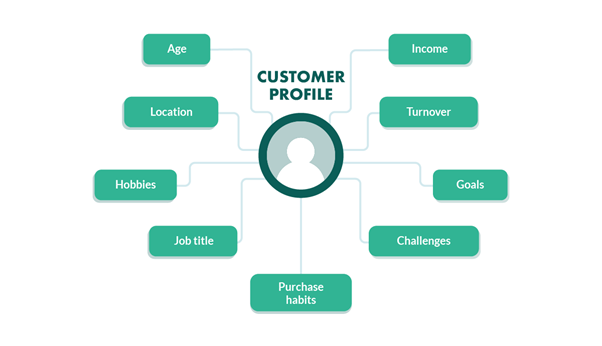
Content syndication is a valuable asset for B2B businesses to increase their visibility and reach potential customers. It helps them build relationships with potential clients and create content tailored to their interests and needs. By syndicating content, businesses can demonstrate their expertise, build trust, and boost their SEO by creating backlinks. Content syndication also ensures that businesses are seen and shared by the right people to increase their online presence and Google search rankings. With content syndication, B2B companies can take advantage of the potential of digital marketing and establish a presence on the web.
Benefits of B2B Content Syndication
B2B Content syndication is a very beneficial method for B2B companies looking to increase their search engine optimization (SEO) efforts. By syndicating content through multiple channels and networks, your content has the potential to reach a much wider audience. This increases the chances of it being found and shared through social media, other websites, and search engines. With more people seeing your content, your brand will become more visible and your content will start to appear higher in search engine rankings.
If you are using outsourced SDR services, it can play a crucial role in lead qualification by contacting and engaging with leads generated through content syndication or other marketing channels. They verify the leads, understand their needs, and assess their fit as a potential client by asking them qualifying questions. This process ensures that sales teams receive high-quality, qualified leads.
Increased brand visibility and awareness
Content syndication is an incredibly powerful tool for boosting your brand's visibility, credibility, and trust. By sharing your content across various channels, you can reach a much wider audience, and give more people the opportunity to learn about your company. Quality content syndication and guest blogging can help you establish yourself as a thought leader and industry expert. When you distribute your content across reputable platforms, your target audience will be more likely to trust and recognize your brand. Furthermore, content syndication can also help you draw in new visitors to your website and build relationships with other industry professionals. This will help solidify your brand's reputation as a reliable source of quality information.

By syndicating content, you can also increase your website’s organic search engine rankings. Search engine algorithms favor websites that have a steady stream of fresh, high-quality content. Syndicating content on multiple channels can help to boost your website’s rankings, providing more opportunities for potential customers and clients to find your business.
Increased lead generation and conversion rates
Content syndication helps generate B2B leads and further categorize them into Top-of-funnel leads, Middle-of-funnel leads and Bottom-of-funnel leads. When you syndicate content, users who find it useful may happily provide their contact details, and take part in bot-based conversational sessions to get more resources and information.
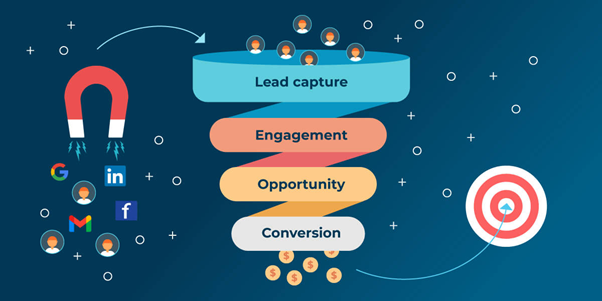
Content syndication in account-based marketing is an essential strategy for B2B marketers to maximize their reach, enhance SEO rankings, drive increased website traffic, and generate a higher volume of B2B leads. These tactics empower businesses to effectively communicate their message to a broad range of potential clients in a cost-effective manner, all while delivering compelling and relevant content that resonates with their target audience.
By leveraging content syndication and email marketing campaigns, B2B marketers can leverage lead nurturing tactics to establish relationships with clients and prospects, ultimately leading to increased sales and successful B2B marketing campaigns.
Cost-effective compared to other marketing strategies
When compared to other marketing strategies, B2B content syndication is a cost-effective way to reach a wider audience. Syndicating content is much more affordable than many other forms of digital marketing, such as paid search advertising, display advertising, and social media campaigns. Syndicated content can reach a much larger audience than when you use traditional marketing methods like telemarketing. Hence you should consider changing your marketing strategy from radio, television, or print advertising to a more interactive and responsive methodology of content syndication.
Content syndication also offers an advantage over other forms of marketing in that it provides long-term visibility. Syndicated content can remain visible online for a long period, allowing you to build a large base of followers over time. Because syndication allows you to reach a wider audience, it can help you to build loyalty, which can result in increased sales and patronage.
Content syndication is a cost-effective way to reach target audiences that may not be engaged with telemarketing or other digital marketing approaches. By placing content on other websites, you can reach audiences that may not be active on your website or social media channels. Syndication can be used to reach audiences that may not be aware of your brand, allowing you to introduce them to your products or services and generate new leads.
Improved SEO and website traffic
Content syndication can be a powerful tool to improve SEO and website traffic. Not only does it allow your content to reach a wider audience, but it also helps to establish you as an authority in your field. Syndicating content can also result in an increase in backlinks, which helps to improve your website's search engine ranking and visibility. When you use content syndication, you can target specific audiences that have more ideal customers with an interest in your content, helping to improve your website's traffic. Content syndication is a great way to reach a larger audience, increase your website's visibility, and improve your SEO. Sharing your content on high-performing and authoritative platforms also helps in boosting your SEO ranking.
Common Challenges in content syndication and How to Overcome Them
By proactively addressing the following common challenges, businesses can maximize the benefits of content syndication and overcome hurdles to achieve their lead generation and marketing objectives. Adaptation, continuous optimization, and a data-driven approach are key to successfully navigating the content syndication landscape for B2B lead generation.
Ensuring content quality and consistency across multiple platforms
Quality and consistency are essential for successful content syndication. Without it, your content can quickly become irrelevant. To ensure quality and consistency across multiple platforms, it's important to have a unified content strategy by following these three rules:
• You should avoid duplicating content across different platforms and have a process for monitoring and maintaining content quality and accuracy.
• Utilizing SEO best practices such as keyword optimization and link building can also ensure that your content is seen by the right audience and is easily accessible.
• Always review your content for accuracy and consistency and be willing to make changes if necessary.
Addressing concerns about duplicate content and SEO penalties
Duplicate content is one of the biggest concerns when it comes to content syndication. When content is syndicated across multiple sources, it may lead to duplicate content issues, which can hurt the SEO of the original content source. To avoid this, it is important to ensure that the content syndicated is unique and cannot be found elsewhere. Additionally, if the content is to be syndicated, it is important to properly link back to the source. This will help ensure that the source’s SEO is not negatively impacted due to the syndication of their content. Additionally, when syndicating content, it is important to use the canonical tag, which will tell search engine crawlers which source should be given credit for the content. By doing this, content syndication can be used to benefit the original content source rather than hurt it.
Managing lead quality issues and false positives
Lead quality issues and false positives can be some of the most challenging aspects of B2B content syndication. If your leads are not of good quality, your content syndication efforts will be fruitless as qualified leads are the goal. To overcome this challenge, it is important to ensure that the content you are syndicating is relevant to the target audience. You should also consider implementing a lead scoring system to ensure that the leads you are getting are of the best quality. This is done by assigning points to each lead based on their profile and behavior. This will help you weed out false positives and only focus on leads that have the highest potential of becoming customers.
Managing expectations and setting realistic goals
One of the main challenges of content syndication is managing expectations and setting realistic goals. This is especially true when it comes to B2B content syndication, as it requires a significant amount of time and resources. To overcome this challenge, it is important to have a clear understanding of what you want to achieve from your content syndication efforts.
• Set measurable goals that are aligned with your overall marketing objectives, and then use analytics tools to track and monitor your progress.
• Create a timeline with realistic milestones to track your progress, and adjust your tactics as needed.
• Having open communication with partners ensures that expectations are managed and goals are met. With proper planning and execution, you can ensure that your content syndication efforts are successful.
Strategies for Effective B2B Content Syndication
Identifying your target audience and their pain points
A vital part of successful B2B content syndication is identifying your target audience and their pain points. Knowing your audience’s needs and interests can help you create content that appeals to them and builds trust in your brand. To do this, you need to research your market based on the ideal customer profile and find out what their biggest pain points are. You can conduct surveys, interviews, and focus groups to understand their needs and preferences. You can use analytics tools to get an understanding of their behavior. Once you have a comprehensive understanding of your target audience, you can create content that addresses their needs. Using SEO strategies will ensure that your content is optimized for search engines. This will help you reach your target audience more effectively and increase your chances of driving conversions.
Choosing the right syndication partners and platforms
When it comes to choosing the right syndication partners and platforms, it is important to prioritize quality over quantity. Focus on finding partners with established credibility in the B2B space that have a track record of success. Consider what types of content they are already syndicating, and how their audience may differ from yours. it is also important to ensure that the syndication platforms and partners you choose have effective SEO capabilities. This means that the content you syndicate should be optimized for search engines, with relevant keywords and phrases included in the title and copy. By taking these steps, you will be well on your way to maximizing the potential of your B2B content syndication efforts.
Caution: Co-marketing with companies that are competing for the same keywords is not a wise choice for improving SEO and website traffic. This type of co-marketing can lead to a dilution of the keyword focus, which can weaken the search engine optimization of both websites. Additionally, it can confuse search engines, making it more difficult for them to accurately index and categorize your content. Always remember that it is best to steer clear of co-marketing with companies that are competing for the same keywords and look for other types of co-marketing opportunities that can be more beneficial for SEO and website traffic.
Creating high-quality content that resonates with your audience
When it comes to content syndication, SEO should be top of mind. By optimizing content for search, businesses can ensure their content reaches their target audience. To maximize SEO visibility, it is important to leverage Tofu, Mofu, and Bofu content strategies. Tofu content focuses on top-of-the-funnel topics, helping to bring potential clients into the funnel. Mofu content is more mid-funnel and focuses on providing potential clients with more detailed information about your product or service. Bofu content is intended for those who are further in the funnel and are close to making a purchasing decision. All of this content should be optimized for search and include keywords relevant to your target audience. By leveraging these strategies, businesses can ensure their content reaches their target customers and helps to move them through the sales funnel.
Developing a lead nurturing process that maximizes ROI
One of the most important strategies for effective B2B content syndication is developing a lead nurturing process that maximizes ROI. This process should involve creating content that speaks directly to the customer's needs and interests, while also leveraging the power of SEO to drive organic traffic to the content. SEO tactics such as keyword research, link building, and on-page optimization should be used to ensure that content is visible to the right audiences. Additionally, by using targeted email campaigns, businesses can make sure that leads receive their content at the right time, allowing them to establish relationships with potential customers and increase conversions. With an effective lead nurturing process, businesses can maximize the return on their B2B content syndication strategy and ensure their content reaches its full potential.
Funnel-Based Content Types for B2B Content Syndication
Top-of-funnel content: Explainer videos, blog posts, infographics
At the top of the funnel, you want to focus on content that gets people excited and interested in what you have to offer. Explainer videos are a great way to do this as they provide a visual and engaging way to learn about a product or service. Blog posts are also great for the top-of-funnel because they can provide informative content that helps educate readers about the topic. Finally, infographics are great for top-of-funnel content because they provide a visual representation of data and statistics that can be easily understood. All of these content types can help draw people in and get them interested in what you have to offer.
Middle-of-funnel content: Case studies, product demos, webinars
At the middle-of-funnel stage, content should be tailored to show prospects how your company’s products or services can solve their problem. Case studies are useful for providing real-world examples of how your company has helped other customers. Product demos give prospects an in-depth look at how your product works and how it can benefit them. Webinars are great for providing helpful information and advice and can be used to educate prospects, demonstrate expertise, and build relationships with potential customers. All three of these content types can be used in a successful B2B content syndication strategy.
Bottom-of-funnel content: Free trials, demos, consultations
Bottom-of-funnel content can be very effective for B2B content syndication, as it allows you to showcase your product or service and allow potential customers to experience it firsthand. Free trials, demos, and consultations are all great ways to engage prospects and give them the chance to try out what you have to offer. This content type can be particularly helpful in SEO, as it provides an opportunity to demonstrate the value of your product and allows customers to observe how it works in real-time. Additionally, this type of content often has a longer shelf life than other types of content, making it more likely to get indexed by search engines. As such, creating content that focuses on free trials, demos, and consultations can be highly beneficial for B2B content syndication.
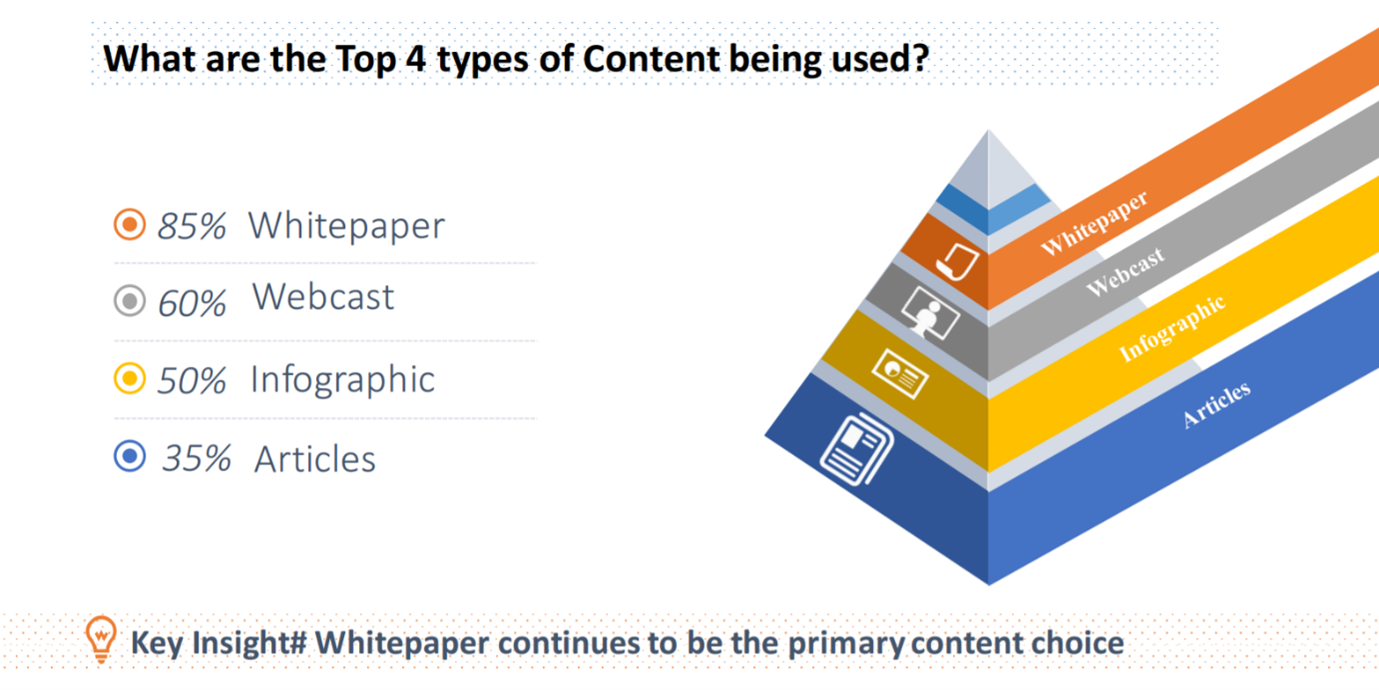
Best Practices for B2B Content Syndication and Avoiding Common Mistakes
When it comes to B2B content syndication, it’s important to understand the best practices for success. First and foremost, you should:
• Always ensure that the content you’re syndicating is high-quality and relevant to your target audience.
• Focus on creating content that is tailored to the platform you’re using to syndicate the content.
• Include a link to the original content in your syndicated post to ensure that you’re sending visitors back to your website.
It’s also important to avoid common mistakes when syndicating content. which can lead to a loss of time and resources.
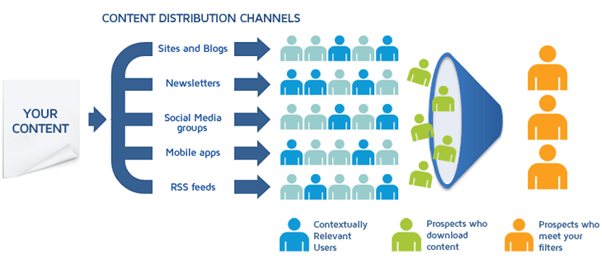
Creating a compelling headline and description for your content
Having a compelling headline and description for your content is an important factor to consider when creating a B2B content syndication strategy. It helps attract potential clients by giving them an idea of what the content is about. Additionally, an effective headline and description should be SEO-friendly, containing keywords and phrases that are relevant to the content. Additionally, it should also be concise and informative, providing readers with the necessary information to decide if they want to continue reading or not. Finally, the headline and description should also be unique, as it will help differentiate your content from the competition.
Using visual elements to enhance engagement
When devising a B2B content syndication strategy, it is important to think about utilizing visual elements to maximize engagement. Images, videos, infographics, and other visuals can be great ways to make your content stand out and attract readers. visuals can also be a great tool for succinctly conveying complex ideas and concepts. By incorporating visuals into your content syndication, you can ensure your message is effectively communicated to your target audience. Visuals can help to boost your SEO rankings, as search engines prefer content with visuals over content without them. So when planning a B2B content syndication strategy, consider including visuals in your plan.
Optimizing landing pages for conversions
When optimizing your landing pages for conversions, it’s important to consider the user experience. Make sure your landing pages are mobile-friendly, and that all content is easily accessible, also be sure to optimize your landing pages for SEO. Include relevant keywords and phrases, and use clear headings and titles. Make sure the page is fast-loading and free from any unnecessary scripts or files that would slow it down. Finally, use clear, concise copy that speaks directly to your target audience. By following these best practices, you can ensure that your landing pages are optimized for conversions and perform better in search engine rankings.
Personalizing content to increase the relevance
When it comes to B2B content syndication, personalization of the content is key to increasing relevance.

By adding more personalization to your content, such as custom-tailored messaging, targeted offers, and unique product recommendations, B2B companies can better engage their target audience and increase the effectiveness of their content. Personalizing content should help to increase organic search engine rankings, as websites that are tailored to the needs of their target audience tend to rank higher in search results. Personalizing content can also help B2B companies to better understand their audience and build long-term relationships with their customers. By personalizing content, B2B companies can create more meaningful connections with their customers and drive more conversions.
Measuring and analyzing performance metrics
To ensure that you are getting the highest return on your B2B content syndication investment, you must measure and analyze performance metrics. This will allow you to determine where your content is performing best and make necessary changes to optimize your efforts. You should track metrics like page views, click-through rates, conversion rates, and engagement metrics such as time on the page and scroll depth. This will help you understand if your content is resonating with your target audience and ensure that your content is reaching the right people. Additionally, it is important to consider the cost-per-click or cost-per-engagement metrics to ensure that you are getting the most bang for your buck. With the right metrics in place, you can optimize your content syndication strategy to ensure that you are getting the most out of your efforts.
Performance Metrics for B2B Content Syndication
Metrics to measure syndication success
Performance metrics for B2B content syndication are key to measuring success. By tracking the right metrics, B2B marketers can determine if their content syndication efforts are paying off and if their content is meeting the needs of their target audience. Some important metrics to track include the number of views, clicks, and conversions from each syndication platform, as well as engagement metrics like click-through rates and bounce rates. Marketers should measure the amount of content that is shared, how many leads are generated through syndication, and how many new customers are acquired. With this information, marketers can determine which syndication channels are driving the most value and adjust their content strategy accordingly.
Examples of metrics to track
Tracking performance metrics for B2B content syndication is essential for understanding the success of your efforts. By monitoring key metrics, you can see how and where your content is performing, and make changes to improve its reach. Some examples of metrics to track include click-through rate, lead generation, number of new visitors, and organic search visibility. Tracking the number of shares, likes, and comments your content receives is a great way to measure engagement with your content. Tracking these metrics will give you a better understanding of the effectiveness of your content and help you make the necessary improvements to increase the reach of your content.
How to use metrics to adjust and improve your strategy
Performance metrics for B2B content syndication can be used to measure the success of your content syndication efforts and help you adjust and improve your strategy. Key performance metrics to track include the number of clicks, impressions, and conversions generated from your content. You should also track the average time spent on the content page, the number of subscribers or followers you acquire, and how frequently your content is shared. You should monitor how your content is performing relative to other pieces of content in the same industry or market. By tracking these metrics, you can identify where you need to adjust your content syndication strategy to maximize its effectiveness.
Advanced Strategies for B2B Content Syndication
Account-based marketing (ABM) and how to integrate it with content syndication
Account-based marketing (ABM) is a popular strategy that focuses on targeting a specific group of customers with tailored content. When integrating ABM with content syndication, you can ensure that the right content is reaching the right customers. You can use data to understand the interests and needs of your target audience and create content specifically tailored to their needs. This can be done by researching the industry, competitors, and customer personas, and then crafting content that speaks to those interests. you can use tools like link building, email campaigns, and social media outreach to ensure that the content reaches the right customers. By integrating ABM with content syndication, you can maximize your reach and ensure that your target audience is seeing the content they need to make an informed decision.
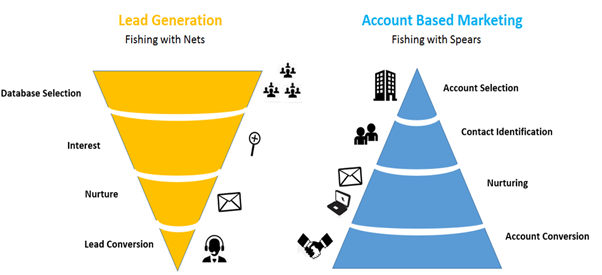
Leveraging intent data to target the right accounts and prospects
Intent data can be a powerful tool for B2B content syndication. It allows you to identify the right accounts and prospects for your marketing efforts, so you can make sure that your content is reaching the right people. By leveraging intent data, you can customize your content to better engage with potential customers and increase the likelihood that they will take action. Furthermore, you can also use intent data to customize your content for different accounts and prospects, so that you can tailor your message to their specific needs. By taking advantage of intent data, you can maximize the impact of your content syndication efforts, and ensure that your content is reaching the right people.
Scaling your syndication efforts using marketing automation
When it comes to scaling your B2B content syndication efforts, the use of marketing automation and AI can be extremely beneficial. Automation can allow you to target specific audiences, track performance, and optimize campaigns quickly and efficiently. Using programmatic advertising can be a great way to get your content in front of the right people, as it allows you to target audiences based on their interests and behaviors. Leveraging SEO can help you ensure that your content is being seen by the right people, as well as helping to improve your overall organic search rankings. By combining these strategies, you can ensure that you are reaching the right audiences and maximizing your content syndication efforts.
Emerging innovations in content formats and how they can be used for syndication
As B2B content syndication grows in popularity and effectiveness, it's important to stay up-to-date on the latest innovations in content formats. Videos, interactive content, and other emerging formats can be used to engage with audiences and are easily shareable across multiple channels. When creating a syndication strategy it is important to consider how to best leverage these formats for maximum visibility. Repurposing content into different formats can also be beneficial. For instance, a blog post can be turned into an infographic or podcast to increase visibility and engagement, while also improving SEO performance.
When creating a B2B content syndication strategy, it's important to consider all possible types of content formats. According to 2021 data, these are the most effective B2B lead generation content formats
• events accounting for (68%).
• followed by webinars (61%).
• whitepapers (50%).
• case studies (50%).
Other useful formats include e-books, survey reports, infographics, and podcasts. By taking the time to consider all possible formats, you can create a content strategy that is sure to provide maximum visibility and lead generation.
Conclusion
By staying up-to-date on the latest trends in content syndication, you can ensure that your B2B content syndication efforts are as effective as possible. By combining the use of interactive content, repurposing content, and leveraging emerging formats of content, businesses can gain maximum visibility and reach with their target audiences. With the right strategies, B2B content syndication can be an incredibly effective tool in driving brand awareness and engagement.
S2W Media can help you implement content syndication to boost your ROI. Their team of SEO professionals has the expertise to help you find the right syndication outlets for your content, optimize your content for search engines, and measure the performance of your campaigns. With their help, you can maximize the impact of your content syndication efforts and generate more leads and conversions for your business. In addition, S2W media can provide you with insights on how to improve your content syndication strategy, so that you can keep up with the ever-changing trends in search engine optimization. With their help, you can stay ahead of the competition and reach your business goals in no time.



